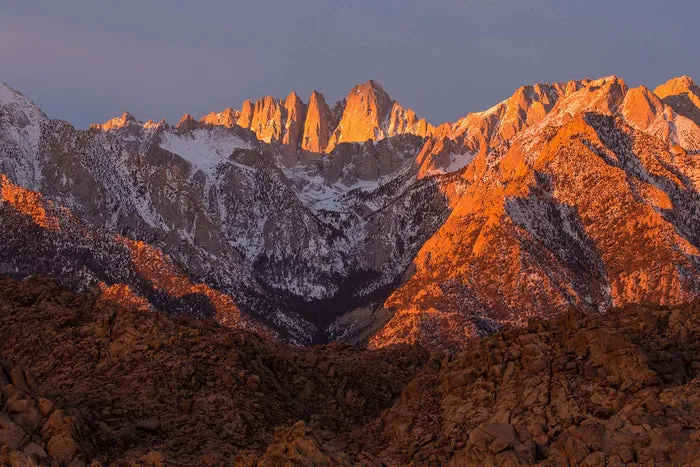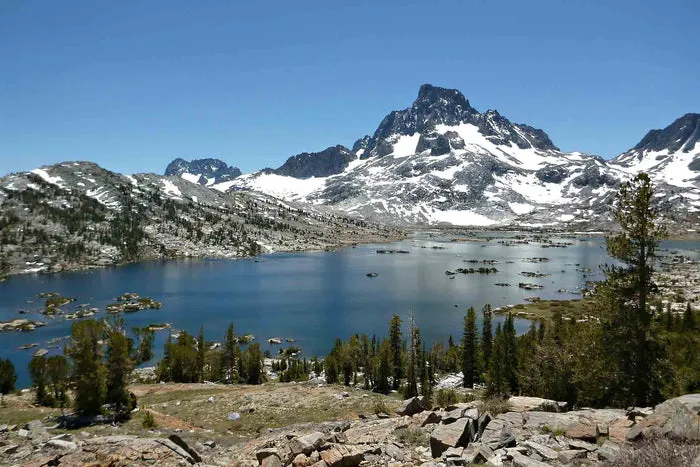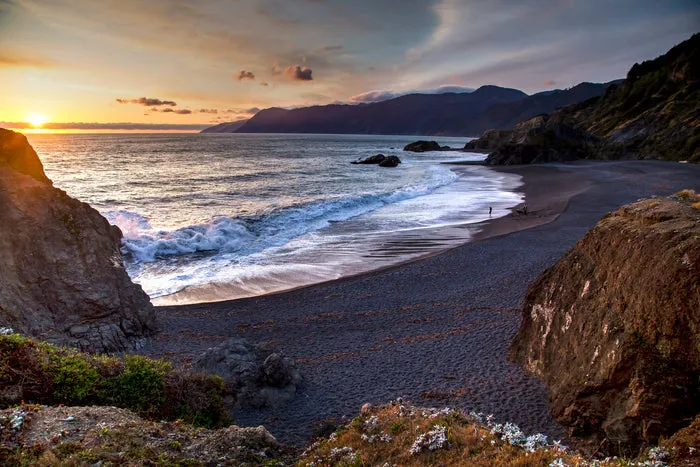California, the Golden State, is a land of breathtaking contrasts, offering everything from sun-drenched coastlines and ancient redwood forests to glaciated peaks and arid deserts. For those seeking to truly immerse themselves in this natural grandeur, there’s no better way than strapping on a pack and hitting the trail. Backpacking is arguably the most immersive way to experience its raw beauty, allowing you to connect with the wilderness on a deeper level. From challenging summit pushes to scenic coastal treks, the opportunities for unforgettable Backpacking Trips In California are endless. This guide explores some of the most iconic routes, offering insights to help you plan your next adventure.
Backpacking in California provides a unique perspective, slowing down the pace of travel and revealing hidden gems often missed by road trippers. You’ll experience the shift in ecosystems firsthand, feel the cool mountain air, smell the scent of pines or the salty ocean breeze, and witness sunrises and sunsets paint the landscape in unforgettable colors. It’s an experience that challenges the body, soothes the mind, and nourishes the soul.
Trans-Catalina Trail
How does embarking on an island adventure sound? You can do just that on Santa Catalina Island, located approximately 25 miles off the Southern California coast. The Trans-Catalina Trail is a 40-mile point-to-point trek that offers a surprising amount of diversity, from rolling mountaintops providing sweeping ocean views to open grassy fields where bison roam, and secluded harbors perfect for a refreshing dip.
This trail is rated as strenuous, but with designated campsites equipped with water sources along the way, it’s accessible for fit beginners looking for a unique challenge. The varied terrain keeps the hike interesting, presenting new vistas and environments daily. Planning ahead is key, especially regarding ferry transport and campsite reservations.
Onion Valley to Mt. Whitney
For backpackers seeking an iconic and physically demanding challenge, the route from Onion Valley to Mt. Whitney is a must-add to your list. Standing at 14,505 feet, Mt. Whitney is the highest point in the contiguous United States, making its summit a coveted goal for many hikers. This is one of the most legendary Backpacking Trips In California.
The trail typically covers around 44 miles and traverses stunning alpine scenery, passing numerous scenic lakes and ponds perfect for filtering water or taking a quick, cold plunge to revitalize tired muscles. You’ll also navigate Forrester Pass, the highest pass on the entire Pacific Crest Trail, before finally reaching the summit and being rewarded with truly panoramic views of the Sierra Nevada. Securing permits for Mt. Whitney is highly competitive, requiring diligent advance planning through the permit lottery system.

Hiker on the trail during a backpacking trip to Mt. Whitney, California
Lake Aloha Trail
If you’re not quite ready for a multi-day epic or are looking for a fantastic weekend backpacking trip, the Lake Aloha Trail offers a stunning experience that’s more manageable. Located just south of the popular Lake Tahoe area in the Desolation Wilderness, it provides incredible Sierra scenery without the same level of crowds found on longer, more famous routes.
This out-and-back trail is a very doable 12.5 miles with a relatively moderate elevation gain of around 1,000 feet. While listed as strenuous by some sources, much of the trail is undulating rather than relentlessly steep. The undeniable highlight is spending time near the trail’s namesake, Lake Aloha – a vast, shallow lake dotted with countless granite islands, reflecting the surrounding peaks. Its numerous coves and rocky shores make it a perfect spot for swimming and exploring. Several other beautiful ponds and lakes are passed along the way, adding to the visual appeal.
Rae Lakes Loop
Often cited as one of the most beautiful loops in the Sierra Nevada, the Rae Lakes Loop serves as an excellent, shorter alternative if you don’t have the three weeks typically required for the full John Muir Trail (JMT). In approximately five days, you can experience many of the same iconic highlights found on the JMT, including the dramatic climb over Glen Pass, the powerful Mist Falls, the serene Vidette Meadows, and a chain of spectacular alpine lakes culminating at the stunning Rae Lakes.
This 42-mile loop involves significant elevation gain, testing your endurance on climbs like the approach to Glen Pass. Fortunately, the trail is well-established with numerous designated campsites and reliable water sources, making logistics straightforward. The Rae Lakes Basin itself is a breathtaking spectacle, with the deep blue lakes nestled beneath towering granite peaks. Numerous side trails offer opportunities for exploration if you have extra time.
Thousand Island Lake Loop
Another fantastic loop option for Backpacking Trips In California, especially if you’re looking for a shorter but still incredibly scenic journey, is the Thousand Island Lake Loop. Running about 21 miles, it’s a perfect length for a 2-3 day trip. While it includes a fair amount of elevation gain, it’s generally considered less difficult than some of the longer, higher-elevation treks in the Sierras.
Discover the Best Overnight Summer Camps in Texas
Your Ultimate Guide to Oktoberfest Los Angeles 2024
Discover the Best Things to See in Sarasota
As the name suggests, this trail is renowned for passing a multitude of pristine alpine lakes, each with its own unique charm. The lakes are not only inviting for a refreshing dip but are also known for excellent backcountry fishing opportunities. Beyond the shimmering waters, the trail offers breathtaking views of iconic peaks like the dramatic Minarets, the imposing Banner Peak, and the majestic Mt. Ritter, providing a constant backdrop of granite grandeur.
 Scenic view of Thousand Island Lake with Banner Peak in the background, a popular stop on a California backpacking trip
Scenic view of Thousand Island Lake with Banner Peak in the background, a popular stop on a California backpacking trip
Snow Mountain via Deafy Glade
For those seeking solitude and a rugged weekend trip away from the crowds, the route up Snow Mountain via Deafy Glade in the Snow Mountain Wilderness offers a challenging yet rewarding experience. Located in a remote part of the Northern Coast Ranges, this trail provides a genuine wilderness feel.
The hike is approximately 15 miles round trip, making it ideal for an overnight backpacking adventure. The initial section involves a significant amount of elevation gain, posing the primary physical test of the trip. However, your efforts are rewarded with expansive views from the ridge, including the west peak of Snow Mountain (the trail ascends the east peak) and, on clear days, the distant, majestic cone of Mt. Shasta. It’s crucial to note that water sources can be scarce in this wilderness area, so checking current conditions and planning your water strategy accordingly is essential.
Lost Coast Trail
Widely considered one of the premier coastal Backpacking Trips In California, the Lost Coast Trail offers a unique experience hiking along a wild, undeveloped stretch of coastline in Northern California. At around 25 miles, it’s a manageable distance but is rated moderate to strenuous, largely due to the challenge of hiking on sand and navigating creek crossings.
This is not a traditional trail with constant signage. Successful completion requires good wayfinding skills and a crucial understanding of tide tables, as certain sections are impassable at high tide, necessitating careful timing. The rewards are immense: dramatic bluffs plunging into the Pacific, encounters with sea lions and other marine wildlife, the haunting beauty of old lighthouses, and unparalleled sunsets over the ocean. It’s a challenging but incredibly scenic and memorable coastal trek.
 Hikers walk along the beach section of the Lost Coast Trail during a backpacking adventure in Northern California
Hikers walk along the beach section of the Lost Coast Trail during a backpacking adventure in Northern California
Skyline-to-the-Sea Trail
If you dream of a backpacking trip that showcases the incredible diversity of California’s landscapes in one journey, the Skyline-to-the-Sea Trail is an excellent choice. This point-to-point trail traverses approximately 28 miles, starting in the Santa Cruz Mountains, winding through majestic old-growth redwood forests, and finally descending to the Pacific coastline.
A major perk of this trail is that it’s predominantly downhill, offering a welcome change from steep mountain ascents. Don’t miss the worthwhile side trip to the impressive 70-foot Berry Creek Falls. As a point-to-point hike, you’ll need to arrange transportation at either end. It’s also important to know that dispersed camping is not permitted; you’ll need to secure reservations for designated campsites along the route well in advance. This trail offers a fantastic sampler of Southern California’s varied natural beauty.
Planning Your California Backpacking Trip
Embarking on Backpacking Trips In California requires careful planning to ensure a safe and enjoyable experience.
Permits
Most wilderness areas and national parks in California require wilderness permits for overnight stays. These are often limited, especially for popular trailheads, and may be allocated through a lottery system or reserved months in advance. Always check the specific requirements for the area you plan to visit.
Best Time to Go
The ideal time for backpacking in California varies greatly depending on the region. High Sierra trails are typically best from July through September/October, after snowmelt. Coastal trails can be hiked year-round, though spring and fall often offer the most pleasant weather. Desert and lower elevation trails are best explored in the cooler spring and fall months.
Gear & Safety
Ensure you have appropriate gear for the terrain and conditions, including navigation tools, plenty of water or filtration/purification methods, layers of clothing, and emergency supplies. Always check weather forecasts before you go and be prepared for sudden changes. Practicing Leave No Trace principles is essential to preserve California’s natural beauty for future generations.
Conclusion
California truly is a backpacker’s paradise, offering a lifetime of trails waiting to be explored. From challenging mountain ascents and high alpine lake basins to unique island treks and dramatic coastal walks, the diversity of Backpacking Trips In California caters to all skill levels and preferences. Each trail offers its own unique story and connection to the state’s incredible natural and geological history.
So, whether you’re dreaming of standing on the highest peak, sleeping under the stars on a remote beach, or wandering through ancient redwood groves, there’s a California backpacking trip calling your name. Proper planning, respect for the wilderness, and a sense of adventure are all you need to unlock the magic of the Golden State’s backcountry. Pack your gear, do your research, and get ready for an unforgettable journey.
Frequently Asked Questions
Do I need permits for backpacking in California?
Yes, permits are often required for overnight backpacking in California’s wilderness areas, national parks, and national forests. Regulations vary by location, so it’s crucial to check with the specific land management agency for the trail you plan to hike and secure the necessary permits in advance.
What is the best time of year for backpacking in California?
The best time depends heavily on the region. High mountain areas like the Sierra Nevada are typically accessible from July to October. Coastal and lower elevation trails are often best in spring (March-May) and fall (September-November) to avoid extreme heat or winter storms. Desert areas are ideal in late fall, winter, and early spring.
Are these trails suitable for beginners?
Some of the trails listed, like parts of the Trans-Catalina Trail or Lake Aloha Trail, might be manageable for fit beginners with proper planning and preparation. However, many, like Mt. Whitney or the Rae Lakes Loop, are considered strenuous and require significant physical fitness, experience, and navigational skills. Always research the difficulty and your own capabilities before attempting a trail.
